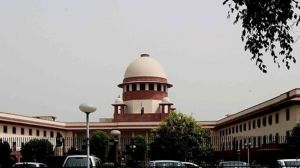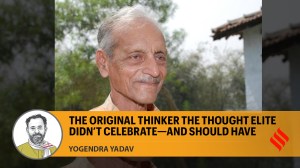Hype, and the long road to Budget 2005
Budget 2004 will be presented by Finance Minister P. Chidambaram after barely five weeks of preparation. His first day in office was May 24 ...

Budget 2004 will be presented by Finance Minister P. Chidambaram after barely five weeks of preparation. His first day in office was May 24 and Budget date is July 8. In fact, taking away the time for consultations — and he has done a great deal — the internal planning period is really less than four weeks.
It is important to remember that this UPA government is the first-ever with the current partners and allies. The process of coordination therefore requires far more time than the four weeks available for Budget making. Fortunately, the FM has experience and track-record of two previous Budgets but those were more than six years ago. Much has changed since then.
Unfortunately, in India, the hype, the media attention and debate raises expectation levels to unreasonable heights. As a result, the tendency to get disappointed is very strong. Budget 2004 has to go beyond the usual tax, trade and investment focus to address food, agriculture, rural development and poverty with the sincerity and seriousness these deserve. So, Budget 2004 really needs to be seen as a mid-year, interim — rather than the final — Budget because of the short preparatory time and also because one quarter of the fiscal year has passed.
The 2004 Budget should be looked at as a stepping stone to a comprehensive plan for the next year and beyond. It will also be prepared by a new team of officials since some of the existing group are due to retire.
And, yet, the FM, under the leadership of PM Manmohan Singh, and keeping the Common Minimum Programme (CMP) in context, will be fully conscious of the nation’s expectations as well as of the international community (this is a reality in this globalised world). And, these expectations are at different levels: short, medium and long term.
The different social and economic segments have varying wishes and needs. The matrix is complex beyond imagination and an important test is whether the Budget announcements will be ‘‘deliverable’’ or implementable or not. If the answer is ‘yes’, then, in what timeframe. A second test of the Budget is whether it improves the health of the economy or not. And, since the economy is not homogeneous, the question is: whose health is benefited? The entire country or only parts of it?
A wise approach would be to set out, clearly and transparently, what the priorities of the 2004 Budget are and also a vision of what the 2005 Budget priorities would be so that the country takes a longer-term view of Budget-making. The next Budget is less than eight months away. So, a combined broad vision would be respected and appreciated.
While there are requests and representations from all and sundry, the critical new element must be the Budget’s attention to the youth of the country, defined as those below 35 years of age. They need to be given opportunity and space. Hopefully, Budget 2004 will do so. Possible triggers to address youth could be through promoting entrepreneurship financing, simple procedures, a national facility managed by young people themselves, infrastructure in terms of a Youth Entrepreneurs ‘Park’, and so on. This approach, combined with a new focus on food, agriculture and the rural economy, would make for a very creative and positive Budget.
The author is chief mentor, CII




- 019 hours ago
- 0218 hours ago
- 0318 hours ago
- 048 hours ago
- 0518 hours ago



























